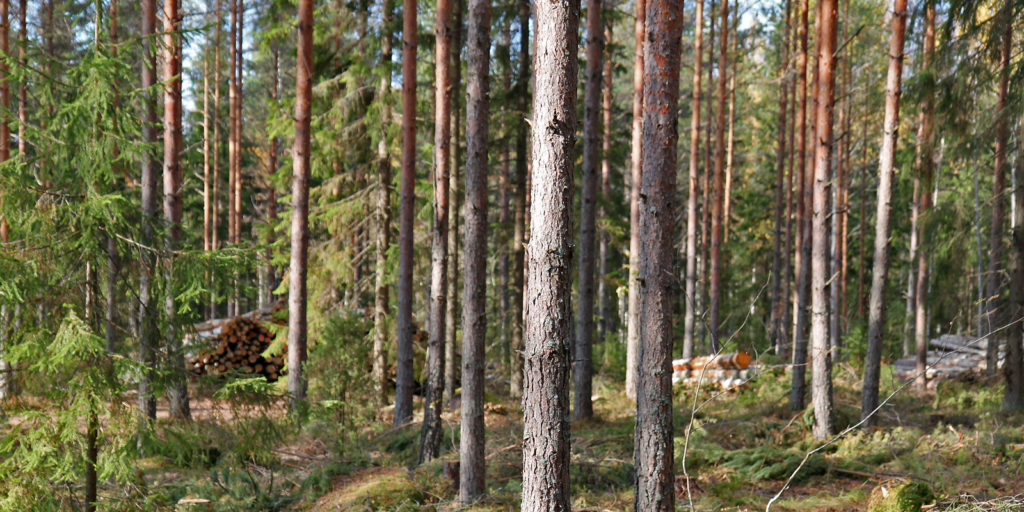
During the coming winter we must ensure a sufficient supply of food and energy from our own country, which means that the capacity to heat homes will take precedence over short-term climate goals, says Heli Peltola, Professor of Silvicultural Sciences and member of the Finnish Climate Change Panel.
While other parts of Europe are engaged in a hectic search for solutions to replace gas from Russia, energy debate in the Nordic countries, with their abundant forests, focuses on wood.
Heli Peltola, Professor of Silvicultural Sciences and member of the Finnish Climate Change Panel, notes that the amount of raw timber imported from Russia has been several million cubic metres, and since this is now discontinued, the imports must be replaced with timber from Finland or other European countries.
A third of Finland’s energy production relies on wood, and most of that consists of forest industry sidestreams, such as black liquor, bark and sawdust.
Wood for energy is also derived directly from the forest in connection with tending young stands, thinnings and regeneration fellings. Energy wood consists of small-diameter stemwood and branches too small for pulp production or other purposes. Wood chips account for less than a fifth of wood energy and the share of Russian forest chips has been about one fifth of that.
For long, a special subsidy has been available to Finnish forest owners, to encourage them to tend young stands whose management is overdue. At the same time, it is possible to receive a subsidy for the gathering of the energy wood thinned out.
’In this situation, we must be able to meet the increasing demand for wood for energy generation. Public aid to the production of energy wood is justifiable now, in order to ensure both security of supply in Finland and the future growth and potential for growth of our forests,’ Peltola says in an interview given to Audiomedia.
Peltola’s main research topics include the impact of forest management on carbon sequestering, growth and timber production in forests and on the management of risk of forest damage; adapting forest management to the changing climate; and the role of forests in combating climate change.

Imported wood must be sustainably produced
The use of wood for energy is strongly linked to climate debate, and in Finland, too, the debate focuses on forests. Since 75 percent of Finland’s land area consists of forests, they are naturally the main carbon sink in the country.
Peltola says that for long, Finns have been content to think that as part of the land use sector, the carbon sinks in forests will largely be sufficient to offset emissions from sectors outside emissions trading. This increases the pressure to decrease forest fellings.
Peltola says to Audiomedia that if the effort-sharing sector, which is excluded from emissions trading, is not able to rapidly decrease its emissions, it will be expected that the land use sector and especially forests can significantly increase their carbon sinks.
Because of biodiversity and climate goals, the sustainable level of fellings is scrutinized closely both in Finland and by the European Union. Forest debate is also becoming increasingly polarized.
’Climate change is a global challenge. If fellings are cut back in Finland for climate reasons and the deficit is made up by importing wood from other countries, it may amount to greenwashing,’ says Peltola.
’Importing more wood would reduce the need to acquire emission rights in Finland, because Finland’s forest carbon sinks would increase thanks to less felling. On the other hand, the emissions caused by more fellings somewhere else would increase correspondingly. All imported timber should be equally sustainably produced, wherever it comes from.’
Fossil raw materials must be replaced by renewable ones
At the moment, the annual increment of Finnish forests is about 104 million cubic metres. In the long run, according to Peltola, increasing Finland’s forest resources and carbon sinks compared to the current level would require the annual level of stemwood fellings to be approximately 70 million cubic metres.
’In the short term, we need both to ensure the timber supply to the forest industry and to increase our forest resources, which would also increase the forest carbon sinks,’ Peltola says.

Peltola explains that forest carbon sinks can be increased by improving the carbon binding capacity and growth of forests. This is achieved by good forest management and fertilization, which in Peltola’s opinion is the fastest and most cost-effective method of increasing forest growth and carbon binding.
’The main focus in combating climate change should, however, lie on a rapid reduction of the use of fossil resources,’ Peltola reminds.
’At the same time as we move away from fossil resources, they must be replaced by renewable ones. In the long run, wood construction and new wood-based textiles, for example, may be of great significance in replacing fossil resources. We must make every effort to use wood instead of fossil resources, because wood is a renewable natural resource.’

One comment on “Professor of Silvicultural Sciences: Security of supply outweighs climate goals – timber imports must avoid greenwashing”
/ Sylwan
Bardzo interesujący artykuł.